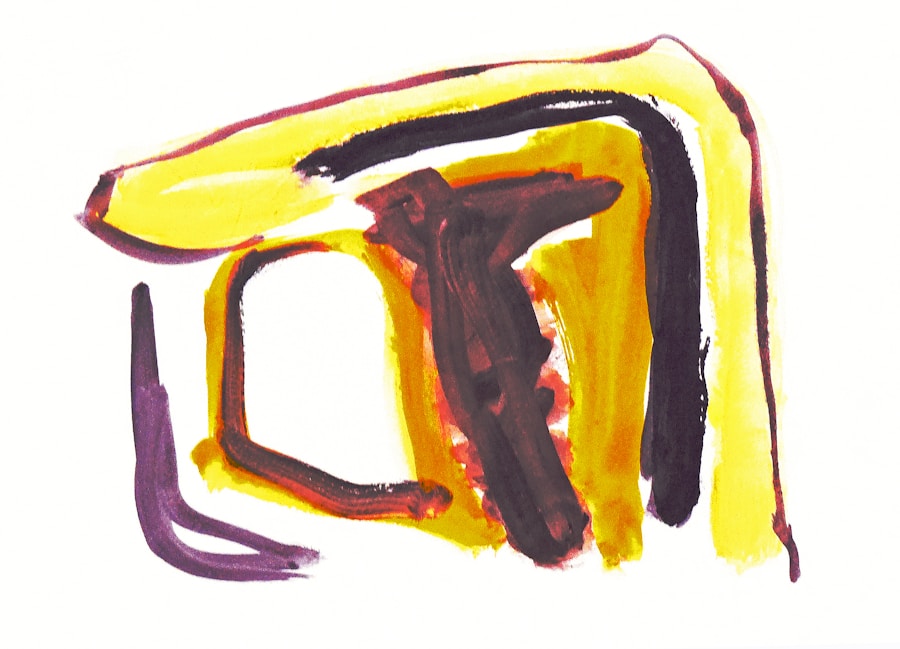The Evolution of Digital Art Graphics: A Visual Journey
The early days of digital art can be traced back to the 1950s and 1960s when computer technology was in its infancy. At that time, digital art was limited to pixelated graphics and basic computer programs that could create simple geometric shapes and patterns. Artists and programmers experimented with early computer systems to create visual art using punch cards and primitive graphic displays. The limitations of the technology at the time meant that digital art was often seen as a novelty rather than a serious artistic medium.
As computer technology advanced, so did the capabilities of digital art. In the 1970s and 1980s, the development of personal computers and graphic design software allowed artists to create more complex and detailed digital artworks. The introduction of software like MacPaint and Microsoft Paint made it easier for artists to create digital drawings and paintings, albeit with limited tools and features. Despite these limitations, digital art began to gain recognition as a legitimate form of artistic expression, paving the way for the next phase of its evolution.
The Rise of Digital Drawing and Painting Software: Exploring Tools like Adobe Photoshop and Corel Painter
The rise of digital drawing and painting software in the 1990s marked a significant turning point in the history of digital art. Software like Adobe Photoshop and Corel Painter revolutionized the way artists could create and manipulate digital images. These programs offered a wide range of tools and features that allowed artists to mimic traditional drawing and painting techniques, as well as explore new possibilities unique to digital media. The introduction of layers, brushes, and filters in these programs gave artists unprecedented control over their creative process, leading to a surge in digital art production.
Adobe Photoshop, in particular, became a staple tool for digital artists, photographers, and designers. Its versatility and powerful editing capabilities made it an essential software for creating digital art across various genres and styles. Corel Painter, on the other hand, focused on emulating natural media such as oil, watercolor, and pastels, providing artists with a more traditional approach to digital painting. These software innovations not only expanded the possibilities for digital art but also brought it into the mainstream as a legitimate and respected artistic medium.
The Impact of 3D Modeling and Animation Software on Digital Art: From Pixar to Virtual Reality
The impact of 3D modeling and animation software on digital art cannot be overstated. The development of programs like Autodesk Maya, 3ds Max, and Cinema 4D revolutionized the way artists could create three-dimensional digital artworks and animations. These tools allowed artists to sculpt, texture, rig, and animate complex 3D models with unprecedented realism and detail. The rise of computer-generated imagery (CGI) in films, television, and video games showcased the potential of 3D modeling and animation software in pushing the boundaries of visual storytelling.
The success of animation studios like Pixar further solidified the importance of 3D modeling and animation in digital art. Films like Toy Story, Finding Nemo, and The Incredibles demonstrated the power of CGI in creating immersive and visually stunning worlds that captivated audiences worldwide. Additionally, the emergence of virtual reality (VR) technology has opened up new frontiers for 3D digital art, allowing artists to create interactive and immersive experiences that blur the line between the real and virtual worlds. The impact of 3D modeling and animation software continues to shape the landscape of digital art, pushing the boundaries of what is possible in visual storytelling and artistic expression.
The Influence of Digital Art in Advertising and Marketing: How Brands Embrace Visual Storytelling
The influence of digital art in advertising and marketing has become increasingly prevalent in today’s media landscape. Brands have embraced visual storytelling as a powerful tool for engaging consumers and conveying their messages in a compelling and memorable way. Digital art allows brands to create visually stunning advertisements, social media content, and marketing materials that capture the attention of their target audience. Whether it’s through eye-catching illustrations, photo manipulations, or animated graphics, digital art has become an integral part of brand identity and communication strategies.
The rise of social media platforms like Instagram, Pinterest, and TikTok has further amplified the influence of digital art in advertising and marketing. These platforms have become essential channels for brands to showcase their visual creativity and connect with consumers on a more personal level. Visual content that is aesthetically pleasing, emotionally resonant, and shareable has become a key driver of engagement and brand awareness. As a result, brands are increasingly turning to digital artists and designers to create original and compelling visual content that resonates with their target audience. The influence of digital art in advertising and marketing is only expected to grow as brands continue to leverage its power in shaping consumer perceptions and driving business results.
The Evolution of Digital Art in Video Games: From 8-bit Graphics to Realistic Virtual Worlds
The evolution of digital art in video games has been nothing short of remarkable. From the early days of 8-bit graphics to today’s hyper-realistic virtual worlds, video game art has continuously pushed the boundaries of what is possible in visual storytelling and interactive entertainment. The advancements in hardware and software technology have enabled game developers to create visually stunning environments, characters, and special effects that rival those found in blockbuster films. The use of 3D modeling, texturing, lighting, and animation techniques has elevated video game art to new heights, immersing players in richly detailed and immersive gaming experiences.
The impact of digital art in video games goes beyond mere aesthetics; it plays a crucial role in shaping gameplay mechanics, narrative storytelling, and player engagement. Game artists and designers are tasked with creating compelling visual worlds that not only look beautiful but also serve as functional spaces for players to explore and interact with. The rise of indie game development has also brought about a renaissance in video game art, with smaller studios pushing the boundaries of creativity and innovation in visual design. As technology continues to evolve, so too will the evolution of digital art in video games, offering new possibilities for artistic expression and interactive storytelling.
Digital Art in the Age of Social Media: The Role of Instagram, Pinterest, and TikTok in Showcasing Visual Creativity
The age of social media has had a profound impact on the way digital art is created, shared, and consumed. Platforms like Instagram, Pinterest, and TikTok have become essential channels for artists to showcase their visual creativity to a global audience. These platforms have democratized the art world by providing artists with a direct line of communication with their fans and followers, bypassing traditional gatekeepers such as galleries and museums. As a result, artists have been able to build thriving online communities around their work, connecting with like-minded individuals who appreciate their unique artistic vision.
Instagram, in particular, has emerged as a powerhouse platform for visual artists to gain exposure and recognition. The platform’s emphasis on visual content makes it an ideal space for artists to share their work in a visually engaging way. Artists can use Instagram to showcase their portfolio, share behind-the-scenes glimpses into their creative process, and connect with potential clients or collaborators. Pinterest has also become a popular platform for artists to curate inspiration boards, share their work with a wider audience, and discover new artistic trends and styles. TikTok’s short-form video format has provided artists with a new medium for expressing their creativity through quick tutorials, time-lapse videos, and interactive challenges that engage viewers in unique ways.
The Future of Digital Art: Exploring AI-generated Art and NFTs in the Contemporary Art World
The future of digital art is an exciting frontier that is being shaped by emerging technologies such as artificial intelligence (AI) and non-fungible tokens (NFTs). AI-generated art has gained traction as a new form of artistic expression that blurs the lines between human creativity and machine intelligence. Artists are using AI algorithms to generate unique artworks that challenge traditional notions of authorship, originality, and creativity. These AI-generated artworks often explore themes related to machine learning, generative design, and human-AI collaboration, offering new perspectives on what it means to create art in the digital age.
NFTs have also emerged as a disruptive force in the contemporary art world, offering artists new opportunities to monetize their digital creations through blockchain technology. NFTs allow artists to tokenize their artwork as unique digital assets that can be bought, sold, or traded on online marketplaces. This has opened up new revenue streams for digital artists who were previously limited by the traditional constraints of physical art sales. NFTs have also sparked conversations about ownership rights, provenance, and authenticity in the digital art market, challenging established norms within the art world.
As we look ahead to the future of digital art, it’s clear that technology will continue to play a pivotal role in shaping its evolution. From AI-generated art to NFTs, these emerging technologies are redefining how we create, consume, and value digital art in the contemporary world. As artists continue to push the boundaries of what is possible with digital media, we can expect to see new forms of artistic expression emerge that challenge our perceptions of creativity, authorship, and value in the digital age.





